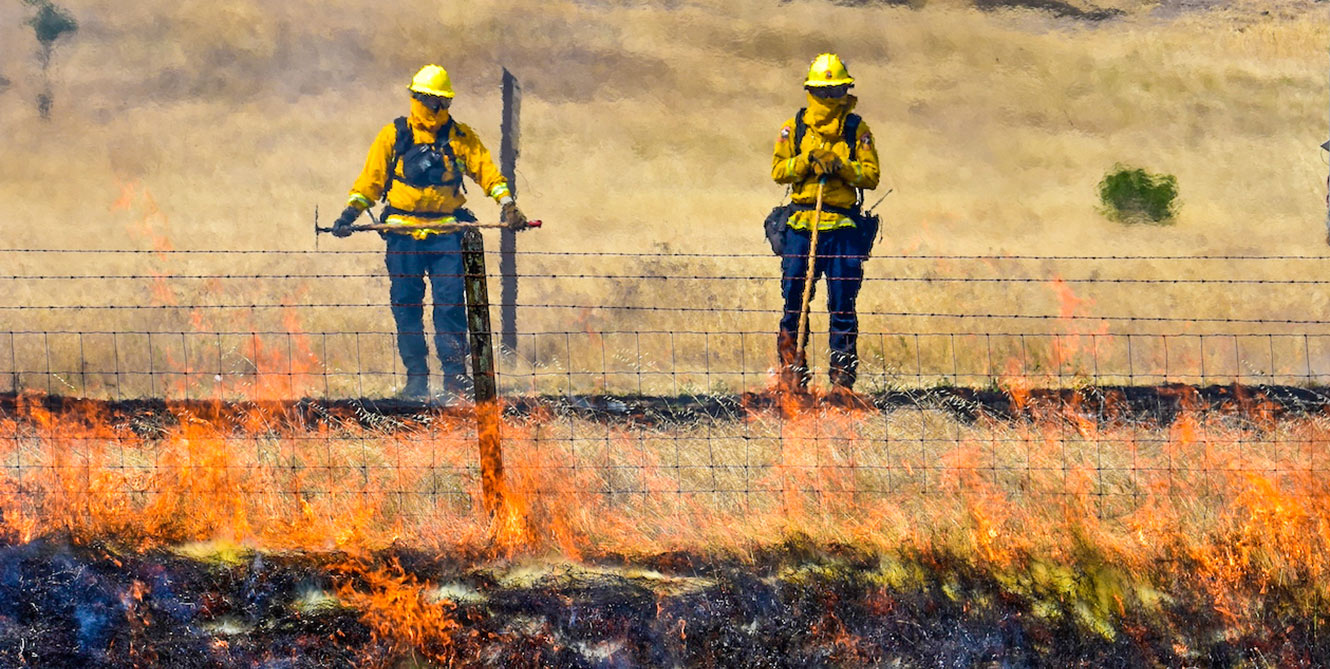Prescribed Fire

Current or planned prescribed fire operations:
- There are no current or planned prescribed fire operations. View recently completed prescribed fire operations.
California’s Fire-Adapted Landscapes
Many of California’s landscapes are fire-adapted, which means trees and vegetation that have experienced frequent fires have developed traits that make them resilient to or dependent on fire. Here in Sonoma County, oak woodlands, redwoods and grasslands evolved with fires set by Indigenous Peoples as a way of maintaining healthy and vibrant ecosystems. As a result, native trees and plants possess qualities like thick bark and fire-stimulated flowering, seed release and germination.
When the first European explorers encountered these landscapes, they reportedly marveled at their picturesque, park-like qualities. These qualities were due to Indigenous Peoples managing many of these landscapes with fire over thousands of years. Intentional fire cleared dead and downed woody material, released nutrients into the soil and initiated new growth on which the animals and Indigenous Peoples depended.
Current Conditions
As Sonoma County was settled, wildfires were frequently suppressed. This led to the buildup of large amounts of woody vegetation. In addition, logging often removed the largest trees, leaving regenerating forests to grow into dense stands of trees. Foresters call these “dog-hair thickets” - walls of impenetrable vegetation created by many trees fighting for limited resources. These conditions - along with invasive pathogens like sudden oak death, which kills tan oaks, and drought-related bark beetle outbreaks, which kill vast areas of pine forests - led to the volatile combustibility of local forests.
In addition to these events, climate change has exacerbated fire intensity and severity by increasing daily temperatures and extending the annual dry season. As a result, we now regularly experience catastrophic wildfires in California.
Solutions
There are solutions that can nurture our landscapes back to health. However, it will take time and a commitment to work with the ecological processes that have shaped these landscapes for eons. Our goal is to use prescribed fire as a tool to transform young and dense forests and woodlands into mature, self-sustaining ecosystems reminiscent of the past and resilient to the conditions of tomorrow.

Land Management and Prescribed Fire
Prescribed fire is a vital element that has been missing from our landscapes for over 100 years. It is one of the many tools that can help reduce vegetation (referred to in land management as "fuel loads"), help protect our communities and revitalize our ecosystems. We are implementing a multi-phased approach that includes creating shaded fuel breaks along trails and roads. Shaded fuel breaks clear the understory in wooded areas, creating defensible space for firefighting and control lines for prescribed fires.
Prescribed fire is the purposeful use of fire in an area. It is carefully planned and carried out under specific weather and fuel moisture conditions called a “prescription”. Prescribed fire reduces the buildup of surface and ladder fuels – which, left untouched, enable fire to climb into the tree canopy and can feed high severity fires that reduce forests to ash. Even with the use of prescribed fire, future wildfires will still occur, but reducing built-up fuel will result in lower-intensity fires. This kind of fire can also help initiate ecosystem processes such as nutrient cycling, seed dispersal, germination, reduction of pathogens and protection of mature trees that will continue to sequester carbon and ultimately help protect adjacent communities.
By managing our landscapes with low-intensity prescribed fire, we will reintroduce an element that can make our parks and our communities more resilient to climate change and future wildfires.
More information
If you'd like to learn more about the use of prescribed fire in our parks, visit the links below:
Prescribed Fire: Community Based Burning in California (Video)
Pile Burning in Sonoma County (Video)
Prescribed burns are key to reducing wildfire risk (Press Democrat)
For tribes, 'good fire' a key to restoring nature and people (Press Democrat)
Why are prescribed fires a major tool for preventing forest blazes? (Save The Redwoods League)
Wildfire and Prescribed Burn Emissions (California Air Resources Board)
This Vast Wildfire Lab Is Helping Foresters Prepare for a Hotter Planet (Press Democrat)



 Translate
Translate